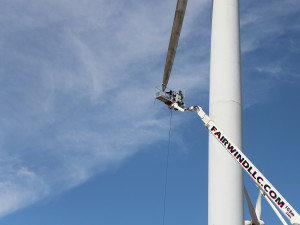gsganzer
Elite Member
- Joined
- Jun 11, 2003
- Messages
- 4,095
- Location
- Denton, TX
- Tractor
- L3800 w/FEL and BH77, BX 2200 w/FEL and MMM
It's a labor problem. Windmill blades can be resurfaced and they are as good as new. The process requires minimal materials, but a lot of hand labor. Think putting a new gel coat on a fiberglass shower. It's cheaper to tear the old one out and replace it.
Recycle doesn't necessarily mean re-use them. I think the idea is to make the blades recyclable for other uses as raw material for something else. Right now they just saw them into pieces and bury them like a bunch of whale bones. Being mainly fiberglass, they don't break down and last virtually forever.


